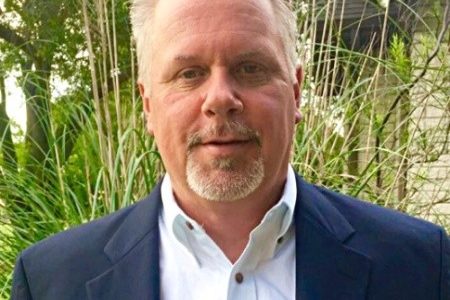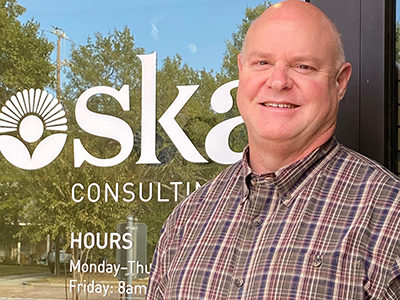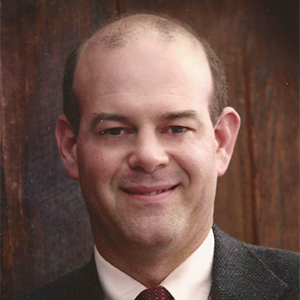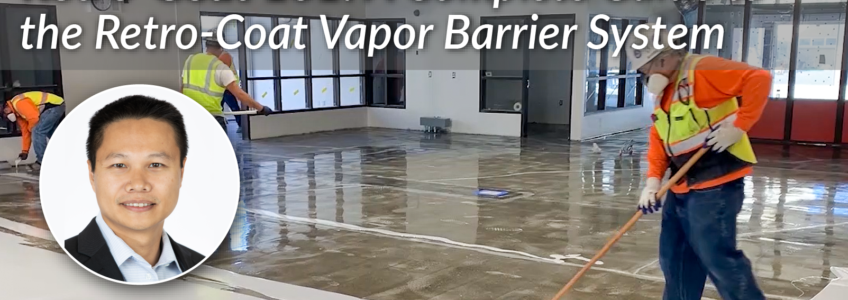Client Spotlight: Brad Parish, P.G., Senior Hydrogeologist with Apex Companies LLC
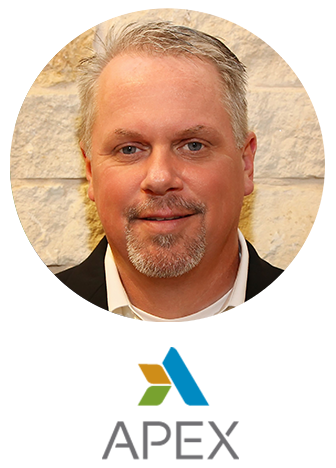
If you ask Brad Parish, P.G., Senior Hydrogeologist with Apex Companies LLC, an award-winning water environmental services firm, what he enjoys most about his work, you’ll likely hear it’s the opportunity to distill his nearly 30 years of experience in groundwater hydraulics and contaminant plume movement into simplified solutions for his clients. He begins, “The best part of my job is that I have the opportunity to assist clients with sound science. Most of our clients are focused on their day-to-day business and they don’t have time to truly understand everything we do. Therefore, we must instill trust in our clients that we have provided the most technically feasible solution to their needs at the most effective long-term cost scenario.” Providing not only tech-based, feasible solutions, but also successful outcomes has been a hallmark of Parish’s work throughout his 19 years with Apex, a valued REGENESIS® and Land Science® client. In his current role, he manages projects involving subsurface characterization, contaminant transport and occurrence, development of site conceptual models, and development of plume remedies. He continues, “Essentially, I enjoy the science of geology and its application to groundwater hydraulics and contaminant plume movement.” Hired initially as a Senior Project Manager in 2002, Parish managed large-scale technical projects, before expanding his role into other related areas. “On many projects,” he says, “I am essentially a technical resource as a Senior Hydrogeologist, and I have also acted as an office manager for Geoscience Groups.”
Prior to joining Apex, Parish held Hydrogeologist positions at several other firms, after earning his BS in Geology from Tarleton State University and Master of Science degree in Geology, from Baylor University in 1992. It was during his master’s program at Baylor that he became interested in a career in hydrogeology. He continues, “At Baylor, I became drawn to the various geomorphic processes and how those processes were affected by subsurface geologic structure and surface lithology. Advanced level courses in hydrogeology really lifted my interest in subsurface fluid dynamics. The next step involved learning geochemistry and how chemicals in groundwater affect or are affected by groundwater flow.” The selection of Baylor for his graduate studies proved invaluable, since at the time, the program provided its own drilling rig. “This afforded me the opportunity to learn well installation, soil and groundwater sampling, and logging techniques while in graduate school- an experience few other programs could match. Overall, my graduate studies really helped solidify my future career path because, in my opinion, understanding subsurface geology and developing an accurate conceptual site model are the most critical in the development of a successful remedy for any site with groundwater contamination.” To stay abreast of trends in his field and new technology, Parish
spends 2-4 hours a month in continuing education. In addition, he participates in several ITRC training modules and webinars that focus on enhanced MNA topics, and studies current vapor intrusion trends and the ever-changing regulatory framework.
When it comes to working with Land Science, Parish is most impressed with the company’s involvement on product selection based on an array of project needs and budget parameters. He shares an example, “On a recent project, I asked Land Science to develop a repair sequence for a large vapor barrier and passive venting system that was fairly unique. Not only did they provide recommendations for a proper repair sequence, they actually developed the sequence for inclusion in our design for permitting by the local authority. This solution presented significant savings to our client, and we were able to receive approval for the repairs and keep the project on schedule.” In terms of Land Science product usage, Parish states that Apex mainly uses the company’s various vapor barrier products on pre-construction projects, but have also used Retro-Coat® on projects with indoor air quality issues in existing buildings. He shares, “In comparison with other vapor barrier products, Land Science’s suite of vapor barrier systems are typically a less expensive and more technically feasible product. It is also helpful that Land Science provides a list of certified installers for their products, and my experience with their installers has been very positive.”
When asked about Apex’s future goals, Parish is quick to respond by emphasizing the company’s commitment to innovation and client service. “At Apex, our goal is to consistently team with clients to assist them through their environmental challenges. We also strive to provide feasible strategies and to keep safety at the forefront of our business. We have distinct future growth strategies that we believe enhance our core business offerings. My personal goal is to always listen to a client first; they will always give subtle clues as to how much they understand about what technical scenario or proposal is being provided, along with the financial reserve they have allotted for environmental issues. I always strive to ensure that they understand where their reserve is being spent and the technical reasons why. Only then can we move forward as a team and make strategic decisions that keeps the project on the right path. ”
Residing in the Dallas/Fort Worth area with his wife of 30 years, Parish has developed a keen awareness and fondness for Texas, since nearly all of his project work over the years has been located within the Lone Star state. He also enjoys a variety of hobbies outside of his work responsibilities. He shares, “Fortunately for me and my wife, who is also a geologist, most of our vacations center around some geologic concept or area. We’ve spent a lot of time in the Big Bend and Hill Country areas of Texas, the coastal regions of North Carolina, and the various Rocky Mountain states. Golf is also a favorite hobby for me and my family.” As one might expect from someone who has worked in the same industry for nearly three decades, Parish has observed an array of changes, although as he points out, some aspects of his work haven’t changed much. He continues, “I believe industry services have changed based on culture. Today, there is a lot more focus on Industrial Hygiene and Safety Compliance. For me, I am still looking at grain size analysis of soil cores- just like I did back in the early 1990’s!” And the most demanding part of his job? “Juggling the amount of time available to assist all clients, regardless of the size or budget of the project.” When it comes to encouraging others to join his field of study, he suggests that one should start with the basics. He concludes, “I would challenge every college student to take a Physical Geology freshman class. I was an engineering student as a freshman and decided to take Physical Geology as a science credit…and I’ve been hooked ever since!”
Land Science is proud to have Brad Parish, P.G., Senior Hydrogeologist with Apex Companies LLC, as a valued client and partner in environmental remediation, and appreciates his highly specialized background and commitment in providing successful remediation and mitigation outcomes for Land Science and its clients.
Client Spotlight: Mike Schultz, Principal Engineer with SKA Consulting, L.P.
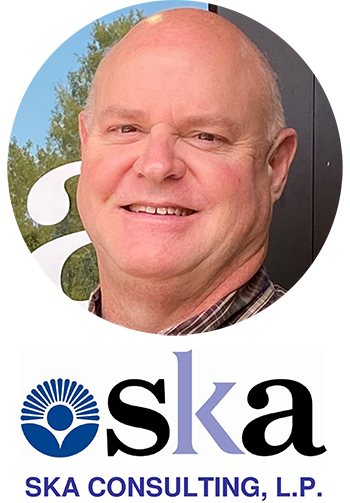
For Mike Schultz, P.E., Partner and Principal Engineer with SKA Consulting, L.P., a leading environmental engineering and consulting firm, having a diverse role with various responsibilities is both challenging and highly fulfilling. From overseeing technical aspects of an array of projects, to client management and new business development, Schultz is involved in nearly every aspect of SKA’s business – and he wouldn’t have it any other way. He begins, “As a Principal and Partner in the firm, I get to wear many hats. On the project side, my responsibilities include technical oversight of assessment, design, and installation projects. I’m also involved with project financial management, as well as business development and proposal writing for new work.” With a 16-year track record of success with SKA and an environmental remediation career that spans more than 30 years, Schultz continues to be driven by the gratification that comes from seeing first-hand how effective teamwork and environmental technology can work together to provide positive impacts on our environment. He continues, “As a firm, SKA brings together environmental and regulatory strategies to achieve unique solutions for our clients. We want to be part of solving problems in a client’s plan for a project. It’s gratifying to drive through town and see a new apartment complex or a retail center and know that before we became involved with that project, the site was a dilapidated former industrial facility or an abandoned railyard. We were part of the client’s solution for that property.”
Before joining SKA in 2004, Schultz served as a staff engineer, project manager, and an office operations manager at other environmental engineering firms, after earning his BS in Mining Engineering from the Colorado School of Mines. He spent the first two years of his career involved in environmental permitting studies for surface mining operations as a member of the Surface Mining and Reclamation Division of the Railroad Commission of Texas. He then joined Hall Southwest Corporation in Austin, Texas as a private consultant, conducting baseline geology and hydrology studies for proposed and existing mining operations. Schultz continues, “I fell into environmental remediation as the industry developed. When I graduated from college in the mid-1980s, there were no jobs in the US mining industry, so I took the regulatory position with the Railroad Commission because that agency regulated coal and uranium mining in Texas. Then in 1994, Hall Southwest was acquired by Groundwater Technology, Inc. (GTI), a national consulting firm, and I moved from Austin to Houston to manage a GTI office. The rest, as they say…is history.”
When it comes to working with Land Science®, Schultz values the high degree of professionalism, product knowledge, and responsiveness they provide. “Land Science is unique in that, with any project, there are always questions about the product or the application from the owners or other engineers and consultants. When I call Land Science, I get case studies, lab studies, quantifiable data, experiences, supporting products, and trained installation contractors. From my experience, Land Science is not just selling a product- they are partnering with owners and consultants to provide solutions.” Concerning Land Science products, MonoShield® vapor barriers are often used due to cost savings and reduced risk on the affected sites. When asked what he enjoys most about his work, Schultz points to two aspects in particular. “There are two parts of my job that I find very rewarding. The first is when we know we have been a part of helping a client achieve their goals for a project, and second, I enjoy mentoring junior staff and seeing them learn and develop.”
Schultz lives in the Houston area with his wife of 33 years and works out of SKA’s headquarters. Outside of work, he enjoys volunteering with the Boy Scouts of America (BSA), working with youth, and leading them on various camping trips. He shares, “I have been an adult leader in the BSA for about 20 years, starting as a den leader when my sons were in Cub Scouts and serving as a Scoutmaster and a Venturing Crew Advisor. I have had the opportunity to take Scouts camping and backpacking all over the country and in 2016 we took a group of Scouts to Switzerland. My children are now grown, but I continue to volunteer as a merit badge counselor, a shooting sports instructor, a volunteer leader with underprivileged Scouts, and on our council’s International Scouting committee.”
When asked about the most demanding part of his job, he feels identifying the right candidates for the SKA team can be challenging. He continues, “To be a successful consultant, you must be inquisitive, always asking the ‘what, where, when, how, and why’ questions. To solve our clients’ problems, we need to ask those questions to better understand the situation and develop appropriate solutions. We must also stay focused on economically feasible solutions, and not every environmental professional has that kind of focus.” When asked whether he would encourage others to join the environmental field, he suggests they begin with a thorough understanding of environmental science and concludes, “I definitely would encourage young people to study environmental engineering and science. There are many facets to the environmental field, and it is a growing industry. When I came into the environmental industry, no one had heard of greenhouse gases and climate change. Now those are terms that every layman knows.”
Land Science is proud to have Mike Schultz, P.E., Principal Engineer with SKA Consulting, L.P., as a valued client and partner in environmental remediation, and appreciates his deep and diversified experience and commitment in providing successful remediation and mitigation outcomes for Land Science and its clients.
Client Spotlight: Mario Sternad, Senior Engineer with Stantec Consulting Services, Inc.
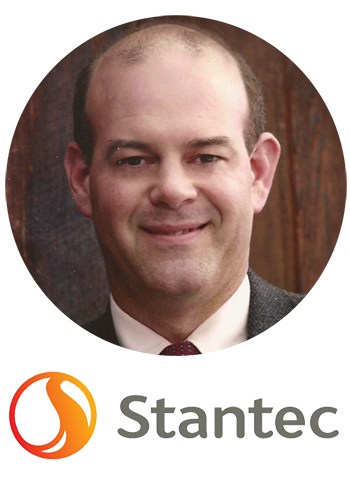 Ask Mario Sternad, Senior Engineer with Stantec Consulting Services, Inc., a global environmental services company and valued Land Science® client, what he enjoys most about his work and it will quickly become apparent that he draws immense satisfaction from providing effective and energy efficient solutions to address contaminants in our ever-changing environment. He shares, “Suffice to say, I love the technical and chemical aspects of my work. In-situ technologies has always been something of great interest to me- how soil, soil-vapor and groundwater contaminants move, are treated, and managed in the ground. Plus, the fact that there are always new products being developed that can make our lives simpler, make systems more reliable, and provide energy efficient ways to control chemicals in our environment is also exciting.” A 36-year veteran in engineering and environmental sciences, Sternad joined Stantec 17 years ago, first as a Safety Manager, and then as Project Manager, prior to being promoted to his current position. In his current role, he serves as a Remediation Subject Matter Expert in the Environmental Services Division of Stantec’s Walnut Creek, CA office. His day-to-day responsibilities include in-situ cleanup technologies for soil vapor, soil, and groundwater, as well as vapor intrusion and vapor barrier design. He continues, “More specifically, I prepare RIFS, RAPs and WPs for soil and groundwater remediation of VOCs, chlorinated solvents, hydrocarbons, petroleum, metals, and pesticides.” In addition, Sternad acts as a Stantec design lead and advisor during field work and construction, system and process development, equipment design, and other project related matters.
Ask Mario Sternad, Senior Engineer with Stantec Consulting Services, Inc., a global environmental services company and valued Land Science® client, what he enjoys most about his work and it will quickly become apparent that he draws immense satisfaction from providing effective and energy efficient solutions to address contaminants in our ever-changing environment. He shares, “Suffice to say, I love the technical and chemical aspects of my work. In-situ technologies has always been something of great interest to me- how soil, soil-vapor and groundwater contaminants move, are treated, and managed in the ground. Plus, the fact that there are always new products being developed that can make our lives simpler, make systems more reliable, and provide energy efficient ways to control chemicals in our environment is also exciting.” A 36-year veteran in engineering and environmental sciences, Sternad joined Stantec 17 years ago, first as a Safety Manager, and then as Project Manager, prior to being promoted to his current position. In his current role, he serves as a Remediation Subject Matter Expert in the Environmental Services Division of Stantec’s Walnut Creek, CA office. His day-to-day responsibilities include in-situ cleanup technologies for soil vapor, soil, and groundwater, as well as vapor intrusion and vapor barrier design. He continues, “More specifically, I prepare RIFS, RAPs and WPs for soil and groundwater remediation of VOCs, chlorinated solvents, hydrocarbons, petroleum, metals, and pesticides.” In addition, Sternad acts as a Stantec design lead and advisor during field work and construction, system and process development, equipment design, and other project related matters.
Throughout his career Sternad has worked on a variety of projects which include various refineries, coastline and beach cleanups, landfills, government sites, and a broad range of industrial sites. To prepare for a career in environmental sciences, he earned his BS in Chemical Engineering from the University of California Berkeley, and followed that with a CA CHE Professional Engineer Certification, and then a CA Civil Engineering Certification. He adds, “I have also been an active AIChE NorCal Section Member/Director since 1984.” When asked how he chose a career in environmental remediation, he says the technical aspects are what initially attracted him. He shares, “I was looking for an atmosphere of technical expertise to further my engineering knowledge. In environmental consulting, I liked the idea of multiple disciplines involved in soil and groundwater cleanup technologies, along with the unique, difficult, and complex solutions being used, and the need for chemical engineering expertise in the design, application, and equipment operation.”
With regard to working with Land Science, Sternad feels the company’s products, commitment to service, and knowledge base help set them apart. He continues, “Land Science has been, and continues to be, a dependable partner, offering outstanding products and expert engineering expertise, solutions, documentation, flexibility, and accurate and comprehensive procedures for installation of vapor barriers. We recently prepared a vapor barrier for a large office warehouse that required a unique solution to add and compact four feet of soil over the top of the vapor barrier in an expedited manner. This required using large scrapers, rollers, and bottom dumps, and resulted in faster application and easier vapor barrier installation below future building utilities, as well as added protection from volatiles in shallow groundwater. We successfully tested a small area first with Land Science’s involvement to see if this would work without damaging the vapor barrier.” Sternad is currently designing solutions using TerraShield® and TerraVent® products as preferred vapor intrusion solutions. “These products offer reduced vapor permeation rates, flexibility with application thickness, ease of application and testing, and an enhanced warranty that meets our project requirements. I also appreciate that Land Science provides their technical expertise during the design, application and testing of TerraShield.”
Residing in the San Francisco Bay area with his wife of 27 years and two adult children, Sternad spends approximately 20% of his time traveling to various project sites. Outside of work, he enjoys playing the trombone, mountain climbing, and working on cars. He shares, “I’ve been playing trombone for some 50 years in local symphony orchestras, symphonic bands, marching bands, jazz bands, and small instrumental groups. I currently play with various big bands in the Bay Area. In college, with the UC Berkeley Jazz Ensembles, I traveled in a big band touring group and recorded in Europe and Japan.” His climbing exploits include a month-long trek through Nepal in 2008 to the Khumbu glacier area, which included Mt. Everest base camp. “My brother and I have climbed various 14,000 ft. peaks in the Eastern Sierra, along with Mt. Whitney, and last year we climbed Mt. Shasta.” In addition, he finds time to stay involved with the Boy Scouts, teaching science-related merit badges.
When asked how he’s seen the industry evolve through the years, Sternad points to what he sees is a decrease in vapor intrusion regulatory levels. “The need to address vapor intrusion impacts has increased as regulatory levels have decreased,” he says. “This is both on the vapor extraction and vapor barrier sides. It has helped that the market has provided new, improved, and cost-effective technologies as the need increased. In addition, environmental assessment tools have changed (soil vapor and indoor air sampling), and remediation electrical controls have improved with higher accuracy.”
And how would he encourage others to join his field of study? He concludes, “It is amazing to be working in the environmental field at this time. I would suggest to new and young engineers, as well as scientists, that they try to see the larger picture- see how an individual project works as a whole. Be aware of the politics, the history of the project and how it started, and try to learn from anyone they can meet, whether it’s in contracts-administration, field staff, equipment vendors, or laboratories. They can all provide valuable insight into how systems work as a whole.”
Land Science is proud to have Mario Sternad, Senior Engineer with Stantec Consulting Services, Inc., as a valued client and partner in environmental remediation, and appreciates his diverse background and approach in providing successful remediation and mitigation outcomes for Land Science and its clients.
Retro-Coat 101: A Complete Guide to the Retro-Coat Vapor Barrier System
Opportunity Zones: The Basics
The talk of “Opportunity Zones” seems to be growing with each passing month, though there is not a lot of information available. Opportunity Zones are a great way to not only receive tax benefits, but help better economically stressed communities in the process. This article helps acquaint those unaware of Opportunity Zones with how they work, and what makes them so important for the future of redevelopment efforts across the US.

What is an Opportunity Zone?
In 2017, Congress established the Tax Cuts and Jobs Act to aid economically strained communities by turning designated areas into a potential real estate investment. By using private investment funds, the communities would benefit from economic growth while investors would receive tax benefits by re-investing their unused capital gains into Opportunity Funds. Today, up to 25% of low-income neighborhoods qualify, in a state, territory, or district are eligible for qualification. Once an Opportunity Zone is created in a certified area, it holds onto that title for 10 years until it is time for the zones to be re-evaluated.
Investing in an Opportunity Zone
If planning to invest in an Opportunity Zone, there are a few requirements that should be taken into consideration. As an example, with a real estate investment, there are certain restrictions put in place to ensure that the property in question is, in fact, bettering the community. For these real estate investments, properties can be either built or remodeled. It must be known though, that if an investor is choosing to remodel, there is a minimum on how much the investor must invest in the project. Say you, as the investor, bought a pre-existing building for $2 million and only wanted to upgrade/remodel it, in order to comply with the Opportunity Zone rules, you would need to spend at least $2 million and 1 dollars. An investor must put more into the project more than the amount they purchased it for – even it that means the investment is only $1 more than the purchase price.

It is also essential that investors note there are “right” and “wrong” types of investments, especially when it comes to real estate. As an example, the “wrong” investments are those that are not much use to community, with examples such as country clubs, luxury housing, gambling facilities, and liquor stores. Keep in mind, communities where Opportunity Zones are located are those with greater financial hardships. The examples provided either create greater financial burden for the residents of the community or are of no use to them. The goal of the Opportunity Zone project is to improve and bring wealth to low-income communities, not to bring in establishments that can do them more harm than good.
The “Right” Investments – Real Estate Example
It is essential when choosing a real estate investment to keep in mind the question of “is this bettering the community”? Great opportunities can come in the form of business parks and warehouses, due to their ability to generate job growth. In 2015, Ashley Capital began a project to turn Hazel Park Raceway, a horse track in Hazel Park, Michigan, into industrial offices and warehouses. The project generated 675,000 square feet of the manufacturing and industrial space now known as the Tri-County Commerce Center. The raceway was located in an Opportunity Zone, so Ashley Capital would receive the provided tax benefits for building within the zone, all the while creating the possibility for job growth in the area.
What is an Opportunity Zone Fund?
Opportunity Zone Funds are a way for investors to invest in Opportunity Zone projects. They are a US corporation or partnership planning on investing at least 90% of its holdings into a qualified Opportunity Zone. They can be used, as stated before, to start ground-up on new buildings, or significantly improve existing ones. These investments allow investors to receive tax benefits immediately and long term on capital gains.
When using an Opportunity Fund to invest, there are three different types of investments that are available. The first is through partnership interests in a business that operates within an Opportunity Zone; the second is owning stock in a business that executes all of its projects and affairs in an Opportunity Zone, the third, is by investing in property located within an Opportunity zone such as real estate.
If looking at it on a 10-year timetable, like the one provided by fundrise.com, there are a few crucial years to note. For the first year, taxes are deferred on the capital gains. For the 5th year, the tax on the capital gains will be reduced by 10%. On the 7th year, tax on the capital gains is reduced by 5% from the 5th year now making it a total of a 15% reduction. On the 10th year, the capital gains taxes are eliminated on potential profits from the Opportunity Fund. It is important to note that in order to take advantage of this program, an investor has to take their capital gains and invest it into an Opportunity Fund within 180 days of the sale of the asset.
According to Adam Hooper for WealthManagement.com, “Essentially, the federal government is allowing the investor to keep the capital gains at 0 percent interest and use those funds to invest in one of these Opportunity Zone projects for 10 years. After 10 years, the investor pays no capital gains tax on the appreciation of the asset”.
How REGENESIS and Land Science Can Help
When investing in an Opportunity Zone, there may be a unexpected issues that come with the land. There is a possibility that the previous inhabitants of the site created negative environmental impacts, and cleanup may be necessary before further progress can be made.
That’s where REGENESIS and Land Science can help. As investment continues into Opportunity Zones, developers will increasingly look to develop brownfield sites – properties with environmental impacts preventing redevelopment. By integrating site cleanup with wider community plans, there can be significant economic benefits, such as the creation of new jobs or an increase in housing values, which can stimulate the revitalization of distressed neighborhoods.
To learn more about handling environmental impacts at opportunity zone sites, download the eBook 11 Tools and Resources for Maximizing Your Investment in An Opportunity Zone.
When it comes to site cleanup, there are many available approaches, each of which must be carefully considered to achieve maximum impact both technologically and economically. Selecting the proper technology to deal with environmental issues can lead to immediate cost savings due to the streamlining of construction schedules or as compared to other applicable remedial technologies or future cost savings from the reduction of overall risk.
The Benefits of Using Nitrile to Mitigate Vapor Intrusion
Nitrile or nitrile-butadiene rubber (NBR) has an abundance of properties that make it an ideal material to be utilized in barrier systems that prevent subsurface contaminants from migrating into the indoor airspace of buildings. It has good abrasion/tear resistance, good compression set, resistance to heat, water, and chemicals. But let’s take a close look at why nitrile has become of key importance to the vapor intrusion mitigation industry.
Gas Permeability and Chemical Resistance – Why Nitrile is So Protective

Many synthetic rubber production companies rate Nitrile’s gas permeability as good. Its gas resistance depends on the level of acrylonitrile which is commonly referred as the ACN content. The typical ACN content ranges from 14% to 50% because the more acrylonitrile included in the copolymer, the resistance to oil and gas permeation increases; however, the higher the ACN content, the lower the flexibility of the rubber. Ergo, the common ACN content percentage for the nitrile to have low permeability while still being flexible is 36%. The possible reason for the good gas permeability is that when butadiene and acrylonitrile are combined in the mixing process, the two polymers react to each other a create strong cross-linked valent bonds. These bonds leave little room for most gases to pass through, except for ozone, ketones, esters, and aldehydes.
So it makes sense that nitrile can be of tremendous value to the vapor intrusion world. The primary goal of practitioners in this industry is to protect human health by blocking contaminant gases from migrating from a subsurface source into the indoor air space of a building.
An acknowledged weakness in many vapor barrier systems is in the slab penetration and perimeter termination locations, where spray-applied core material composed of Styrene-Butadiene (SBR)- modified asphalt is used. While excellent at repelling water, aggressive chemicals such as petroleum solvents and chlorinated volatile organic compounds (VOCs) will permeate into the SBR-modified asphalt at a relatively high rate, particularly in these vapor intrusion sensitive areas of the building construction.
The Research and Development Scientists at REGENESIS and Land Science know this, and that’s why they developed Nitra-Seal.
Nitra-Seal offers a substantial upgrade as it employs a more chemically resistant nitrile latex instead of the more susceptible SBR material. Nitrile, due to some of the reasons explained above, is recognized throughout the environmental engineering industry as being more chemically resistant than rubber or SBR and is often used in personal protective equipment when working on hazardous waste sites (e.g. nitrile gloves). Laboratory testing has shown up to 10X higher chemical resistance when compared to any other spray applied vapor barrier material on the market.
Puncture Resistance
If you’ve been to a doctor’s office lately, you’ll likely see that the gloves sitting there on the counter are no longer latex; they’re nitrile. Physicians offices have moved away from latex and to nitrile gloves. Why? Because not only is nitrile more chemically resistant; it’s more durable too.
So the R&D team at Land Science again applied this concept when they were developing Nitra-Seal. With vapor intrusion regulatory standards becoming ever more complex and stringent, there is an emerging need in the industry for better, more reliable protection against contaminant vapor intrusion.
This is why nitrile is so valuable. It will provide better protection, and that protection will be more durable and reliable due to puncture resistance. Nitra-Seal forms a highly puncture resistant barrier that greatly reduces the chance of damage occurring after installation and prior to the placement of concrete.
The added value brought by nitrile’s durability provides a critical advantage with new building construction.
Nitrile can be applied as sheets or as liquid depending on what it needs to be applied to. For instance, if nitrile rubber is needed to seal plumbing, then liquid is required; but if an entire floor needs to be sealed then nitrile sheets are the best option. There is no need to lose sleep over whether nitrile will leave even a sliver of a crack on the application site because Nitrile can fit into any nooks and crannies of any site where it is spray-applied, including seams and penetrations of a vapor barrier base layers. In the end, once a site is sealed, there is an excellent chance that the seal will last for years without letting gas permeate or being severely damaged.
When the other layers of the Nitra-Seal system are combined with its spray-applied Nitrile-based core to seal all seams and penetrations, the end result is a barrier that is highly resistant to a broad range of chemical pollutant vapors.
Nitrile is a versatile material that is utilized in many different applications, from sealing gas pipes to providing doctors protection in gloves. But it’s also especially valuable to the vapor intrusion mitigation industry, due to its low gas permeability, chemical resistance, and easy application.
Client Spotlight: Mark Quimby, Senior Consultant at SME
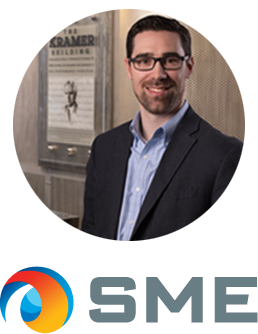 Throughout his 14-year professional career, Mark Quimby, Senior Consultant at SME, a leading regional multi-service engineering and consulting firm and valued Land Science® client, has established himself as a top expert in the field of assessing and mitigating petroleum, chlorinated solvents, and methane vapor intrusion sites. During this time, he has designed and installed dozens of vapor intrusion mitigation approaches inclusive of sub slab passive venting, multiple types of vapor barriers, active sub slab depressurization, and passive interceptor trenches. In addition, he has secured and managed over $50 million in local, state, and federal incentives that include grants, loans, tax abatements and credits, and tax increment financing. He shares, “Currently, I am responsible for the technical oversight on projects, primarily brownfield redevelopment. I am also responsible for working with our project managers and staff, and mentoring them as we deliver solutions to our client’s problems.” His vast experience in his specialized area of environmental remediation stems from an impressive career at SME, where he has risen from a Staff Environmental Specialist to a Project Consultant and then to Senior Project Consultant, prior to being promoted to his current position. His career began shortly after graduating from the University of Windsor, Ontario, where he earned his B.S. in Physics, and it has given him a unique appreciation for seeing the results of his efforts. He shares, “So many sites have no viable liable entity, and without the partnership with communities and developers, the cleanup and redevelopment may never happen. I’ve really enjoyed remediation in this context because I get to participate in both the cleanup and the redevelopment of the site.”
Throughout his 14-year professional career, Mark Quimby, Senior Consultant at SME, a leading regional multi-service engineering and consulting firm and valued Land Science® client, has established himself as a top expert in the field of assessing and mitigating petroleum, chlorinated solvents, and methane vapor intrusion sites. During this time, he has designed and installed dozens of vapor intrusion mitigation approaches inclusive of sub slab passive venting, multiple types of vapor barriers, active sub slab depressurization, and passive interceptor trenches. In addition, he has secured and managed over $50 million in local, state, and federal incentives that include grants, loans, tax abatements and credits, and tax increment financing. He shares, “Currently, I am responsible for the technical oversight on projects, primarily brownfield redevelopment. I am also responsible for working with our project managers and staff, and mentoring them as we deliver solutions to our client’s problems.” His vast experience in his specialized area of environmental remediation stems from an impressive career at SME, where he has risen from a Staff Environmental Specialist to a Project Consultant and then to Senior Project Consultant, prior to being promoted to his current position. His career began shortly after graduating from the University of Windsor, Ontario, where he earned his B.S. in Physics, and it has given him a unique appreciation for seeing the results of his efforts. He shares, “So many sites have no viable liable entity, and without the partnership with communities and developers, the cleanup and redevelopment may never happen. I’ve really enjoyed remediation in this context because I get to participate in both the cleanup and the redevelopment of the site.”
Although his university studies may not have initially correlated with a career in environmental remediation, Quimby now feels fortunate to be working in a profession that makes a measurable and positive impact on our planet. He continues, “I fell into environmental remediation more than I chose it, but it has been a rewarding field and I’m glad I’m here. My degree is in physics, but when I immigrated to the US from Canada, I was hired by an environmental consulting firm. Since then, I’ve worked on a wide variety of sites and cleanups but have spent most of my time in the context of Brownfield redevelopment.” When asked what he enjoys most about his day-to-day work, Quimby is quick to point to a keen sense of satisfaction from seeing his efforts come to fruition. “I enjoy helping to revitalize neighborhoods and communities,” he says. “Many communities have vacant and derelict properties that provide little or no value while presenting a nuisance and health risk. It is rewarding to turn these into assets.” And what is the most demanding part of his job? “Definitely the pace,” he says. “Every day is different and I need to remain flexible to address my client’s needs as they arise.”
When it comes to working with Land Science®, Quimby appreciates the firm’s level of expertise and timely support, and notes that both routinely contribute to enhancing the efficiencies in his work. He continues, “We have worked on several projects with Land Science®. They provide very good technical depth and they are responsive to our support needs.” With regard to specific Land Science® products, MonoShield™ is one that he and SME have recently turned to. He shares, “We are currently using MonoShield™ for the first time on two projects. One is Liberty Park Commerce Center in Sterling Heights and another is Tri-County Commerce Center in Hazel Park. MonoShield™ is providing us with the efficiency of a pre-fabricated roll out system and the flexibility of the spray-applied component for seams, penetrations, and transitions.” Quimby adds, “This is allowing us to meet our project goals in less time compared to alternative systems.” In the past, his teams have also used Geo-Seal® with success, and feels both products have the support infrastructure he needs to ensure successful project outcomes. In addition, he appreciates the collaborative benefits from his company’s relationship with Land Science®. He continues, “Land Science® has a reliable network of certified applicators that we have also developed relationships with. The bottom line is, when working with Land Science®, we know what to expect and have confidence the team will bring the project to a successful conclusion.”
Residing in Plymouth, MI with his wife and four children, Quimby works out of the SME corporate office in Plymouth, and on occasion travels to the firm’s Detroit and Lansing offices. He also supports staff in the other SME offices in MI, IN, and OH. When he’s away from his work, he enjoys reading nonfiction books on science, philosophy, and history, and playing tabletop board and card games. He shares, “My current favorite reads are the Expeditionary Force series by Craig Alanson. My favorite card game is Magic the Gathering by Wizards of the Coast, and my favorite board game is Axis and Allies.” To stay abreast of current trends and the latest technology in his field, he attends various training sessions that include formal classes sponsored by ASTM (American Society for Testing and Materials) and EGLE (Michigan Dept. of Environment, Great Lakes, and Energy). He’s also taken the Princeton Groundwater pollution and hydrology course. When asked what the future goals are for SME, he points to continued growth within the Midwestern US. He continues, “We will continue to grow in MI and expand our operations in IN and OH. Our goal is to be the premier engineering consulting firm in the Great Lakes Mega Region.” And what does he see the future holds for environmental remediation? “I feel vapor intrusion mitigation and remediation is the biggest trend. The country, and Michigan specifically, is trying to get their arms around the Per- and polyfluoroalkyl substances (PFAS) issue as well, but vapor intrusion (VI) will remain a top priority because of its widespread presence and the relevancy of the pathway to human health.” When asked why he feels the work he does is important and why he encourages others to join his field, Quimby speaks to the need for commitment in how we treat our environment. He concludes, “We need to care about the future of our cities and developed areas. It doesn’t make sense to use up land and walk away.”
Land Science® is proud to have Mark Quimby, Senior Consultant for SME, as a valued client and partner in environmental remediation, and appreciates his expertise and diverse contributions in providing successful remediation outcomes for Land Science® and its clients.
Land Science Technologies eNewsletter – Archived Edition
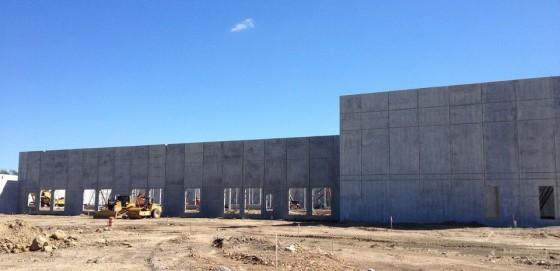
Interested in vapor intrusion solutions? This spring, Land Science Technologies published an enewsletter that featured recent developments in the field. Features include a case study about a 275,000 square-foot Brownfields site that was re-developed into a medical supply warehouse, creating 140 jobs in Detroit, MI. Kelly Ameli Smith is introduced as the new Director of Land Science Technologies, and you have the opportunity to view an on-demand recorded webinar about vapor intrusion regulatory updates and solutions and solutions for new and existing structures.
Click here or use the button above to view an archived copy of the newsletter.
Land Science Technologies Leads Technical Discussion at International Industry Conference
 Land Science Technologies’ Director Peter Grant led a technical discussion at last week’s Battelle-sponsored Ninth International Conference on Remediation of Chlorinated and Recalcitrant Compounds in Monterey, California. Grant’s presentation was titled “Mitigating Vapor Intrusion in Existing Structures Through the Use of a New Coating Technology”.
Land Science Technologies’ Director Peter Grant led a technical discussion at last week’s Battelle-sponsored Ninth International Conference on Remediation of Chlorinated and Recalcitrant Compounds in Monterey, California. Grant’s presentation was titled “Mitigating Vapor Intrusion in Existing Structures Through the Use of a New Coating Technology”.
During his talk, Grant discussed the recent advancements in the technology of vapor intrusion barriers to address the growing need of applying barriers to existing buildings. He highlighted Land Science Technologies’ Retro-Coat™ as a way to provide a chemically-resistant physical barrier to block vapor intrusion.
The Retro-Coat vapor intrusion coating system is applied directly to existing concrete slabs. Unlike other vapor intrusion barrier systems, Retro-Coat is designed specifically to handle foot and vehicular traffic. Specially formulated to be chemically resistant to constituents commonly found on brownfields, PCE, TCE and Benzene, Retro-Coat can be used as a standalone barrier or in conjunction with a SSD system.
Grant also presented field data where the use of Retro-Coat was proven to be successful.
For more information on Retro-Coat, click here or call 949-481-8118.
Successful Retro-Coat Application Featured in Coatings Pro Magazine
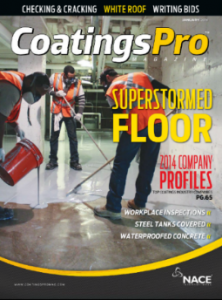 Coatings Pro Magazine recently featured a cover story on Land Science Technologies’ Retro-Coat vapor intrusion coating application at New York City’s Peter Cooper Village. A large number of basement areas within the Peter Copper Village development suffered significant damage from Hurricane Sandy. Rehabilitation and repair required the use of a chemical resistant material to mitigate potential environmental risk associated with vapor intrusion.
Coatings Pro Magazine recently featured a cover story on Land Science Technologies’ Retro-Coat vapor intrusion coating application at New York City’s Peter Cooper Village. A large number of basement areas within the Peter Copper Village development suffered significant damage from Hurricane Sandy. Rehabilitation and repair required the use of a chemical resistant material to mitigate potential environmental risk associated with vapor intrusion.
A summary of the project highlights are:
• Retro-Coat was applied to 15 basements for a total of 150,000 square feet
• Retro-Coat was selected to due to its comprehensive testing on a wide range of contaminants
• Retro-Coat contains no VOCs
• Certified contractor Manhattan Concrete Design ensured timely application to meet the demanding construction schedule
The Peter Cooper Village development 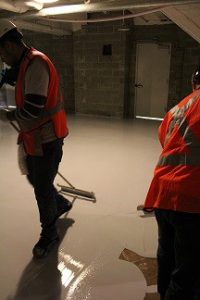 exemplifies the historical transformation of former, underutilized industrial areas (Brownfields) commonly found in urban areas.
exemplifies the historical transformation of former, underutilized industrial areas (Brownfields) commonly found in urban areas.
Formerly referred to as the “Gas District” due to the large number gas fuel storage tanks that were present, these tanks often leaked and made the area undesirable for certain types of land use. In the early 1900s, tank removal was initiated and the neighborhood began to recover from its legacy of gas storage, but the Great Depression halted any beneficial redevelopment. In 1945, the “Gas District” was leveled and construction began on Peter Cooper Village and its sister development Stuyvesant Town.
The development of Peter Cooper Village helped fill a massive need for post-depression housing and evolved into a community for veterans of World War II. In 2006, Peter Cooper was sold by the original developer, Met-Life, for $5.4 billion and is a now premier neighborhood on the lower eastside of Manhattan.
To read the full length Coatings Pro Magazine feature article, 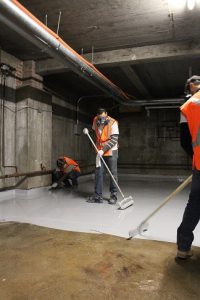 click here.
click here.
To read more about Retro-Coat, click here.
Retro-Coat is manufactured by Land Science Technologies a division of REGENESIS Inc.


